Pivoting and pirouetting: how face-to-face got the moves during coronavirus
Daryl Upsall reflects on what he learned from a turbulent year in face-to-face fundraising.
- Written by
- Daryl Upsall
- Added
- April 08, 2021
The very term face-to-face sounds like the antithesis of good behaviour during the current pandemic. Face-to-face fundraising (F2F), as we know it today – the individual signing up of regular or committed donors – was pioneered by my colleagues at Greenpeace in Vienna, Austria in 1995. So, 2020 was planned to be a celebration of 25 years of what has become the most important donor recruitment tool in the world. A sell-out conference was planned for November 2020 in its place of birth, hosted and organised by The Austrian Fundraising Association and featuring a volunteer working group of global leaders of F2F from the largest INPOs* and agencies.
Face-to-face was on an all-time high, though not without its challenges. And then came coronavirus.
As a F2F pioneer at Greenpeace and the owner of agencies providing F2F fundraising services to the nonprofit sector for the last 15 years, I began to see as early as mid-February 2020 that dark storm clouds were gathering fast and no-one was going to find shelter from the impending storm. Already, we had coronavirus protocols in place in our headquarters in Madrid.
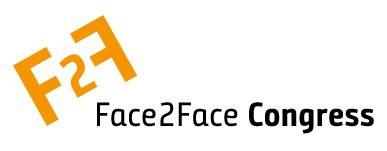
In early March, however, we were still finalising the programme for the 1st International Face2Face Fundraising Congress, trying to figure out how we could find more space at the congress for the 250 registrants plus some 50 more on the waiting list. As a conference planning team, we were writing blogs, getting articles published in the sector media and undertaking interviews and participating in webinars. Oh, the joy!
Then, initially in a haphazard manner, nation by nation the media started to report ever growing numbers of people being infected and dying of this new respiratory illness, coronavirus, with China on the frontline. Firstly with Hunan, cities and eventually countries were being ‘locked down’. As I write, it is the first anniversary of the official national lockdown in the UK. Face-to-face contact with other human beings other than your own household was no longer possible. Streets were empty, doors could not be knocked…every town and city was becoming like a ghost town.
These face-to-face fundraising leaders acted fast. On the 30th March 2020, we ran an online international debate in conjunction with the Austrian Fundraising Association, which I moderated, entitled ‘How face2face teams around the world are responding and coping with COVID-19’!
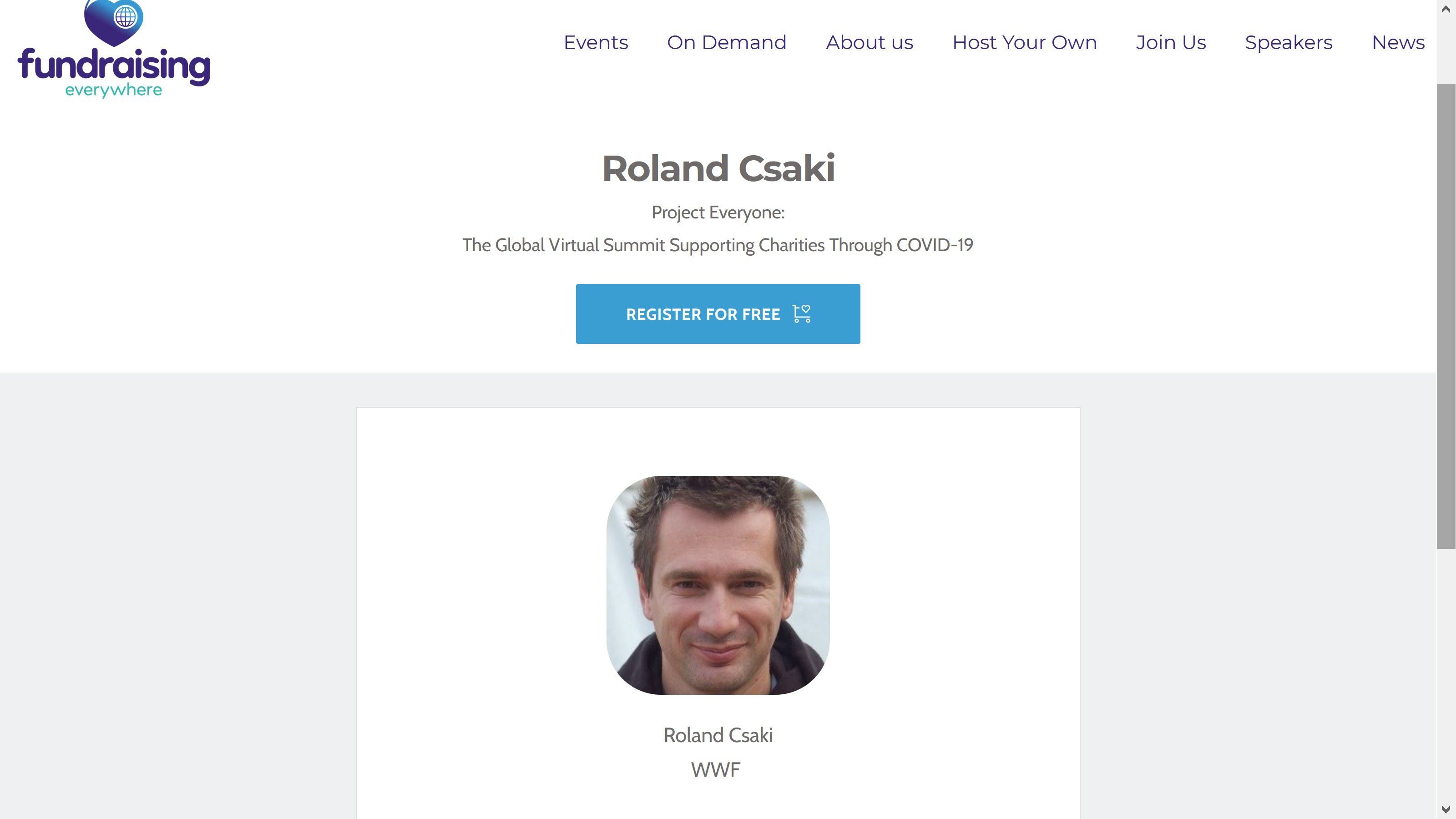
The event was a massive success, attracting attendees from all over the world. Everyone was eager to learn about what could be done in face of the pandemic, what would be its impact, how we might plan for the end of lockdown in a post pandemic world, what safety protocols could be developed for face-to-face fundraisers and the public and would anyone wish to talk to fundraisers in the street or at the door, given the fears of infection?
The success of this event and the ever-receding likelihood that our in-person event would take place any time soon led to this same international volunteer team organising and launching on the 29th April 2020 the 1st International Face2Face Virtual Fundraising Congress, which took place on June 3rd. The half-day event focussed on four key areas:
• Initial learnings from re-opened F2F markets;
• Ethical standards for F2F during Covid-19;
• Strategies for restarting F2F as social distancing restrictions are being lifted; and
• Building blocks for success.
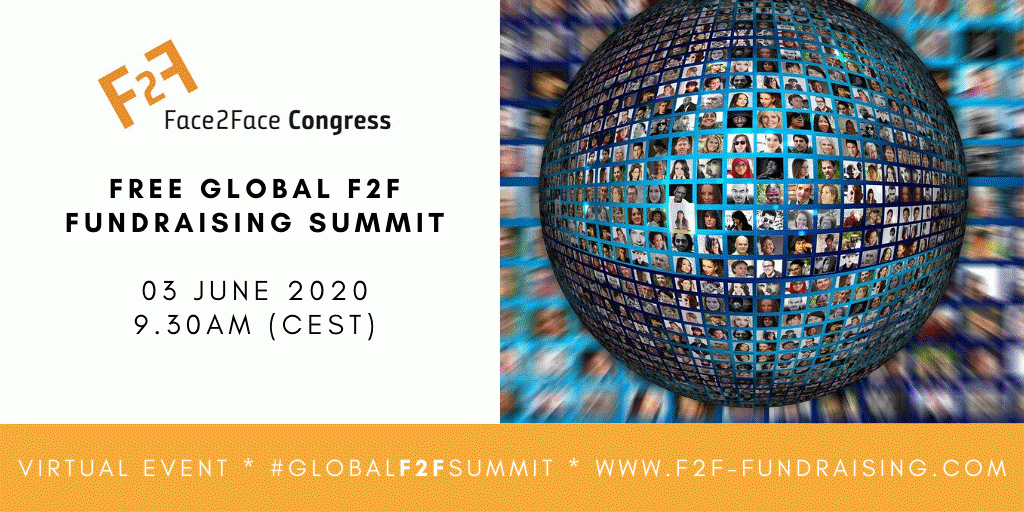
Again, this event was a huge success attracting some 1100 attendees with lively debates and a great deal of shared learning across the participating INGOs and agencies servicing and supporting the global face-to-face fundraising community.
By now lessons had been being learned as the first wave of COVID-19 passed, the lockdowns were being lifted and there was life on the streets and at on the doorsteps again.
Elsbeth de Ridder, global face-to-face specialist at Save the Children International takes up the story:
‘Never before in my extensive F2F career have I seen such global collaboration across the entire F2F industry: (I)NGO’s were working together between themselves, working together with agencies and industry suppliers, working with regulators across the globe, and fast tracked innovation to ensure a safe relaunch of the channel we all love so much.
Now more than ever, focus on quality over volume was needed to ensure sustainability of this channel under continuously challenging and restrictive circumstances. The flexibility, agility and unwavering optimism of all key players within this channel demonstrate what can be achieved when we all work together.’
During the lockdown the leading INPOs and agencies had switched their massive F2F budgets into telephone fundraising (Both for acquisition and to reassure and build donor loyalty); DRTV and digital social media. They pivoted their budgets and their face-to-face teams.
Perhaps surprisingly for some, all of these channels proved to be hugely successful, with the public showing their generosity more than ever, irrespective of the cause.
To the bold and the brave come the rewards. Those nonprofits that went full-out during this period then recorded some of their most successful individual giving fundraising income ever, throughout the rest of the year! Those nonprofits whose senor leadership, management and boards held back from fundraising for fear of ‘upsetting our donors in such a terrible time’ are now the ones in financial crisis.
If there’s one thing we have learned in 25 years of face-to-face fundraising, is that ‘facers’, ‘dialoguers’, F2F fundraisers, call them what you may, are the most fearless, committed, hardworking and perhaps persuasive storytellers and advocates within any charity, UN agency or NGO. They put us ‘desk-wallahs’, hiding behind our computers and PowerPoint presentations, to shame. They’re not likely to let some stupid virus with a silly name stop them doing what they do best, which is talking with and listening to actual and potential donors.
So, what were these great people doing during lockdown? Across the continents, in every type of nonprofit organisation and F2F team they were on the telephone, speaking to donors; using their social media accounts to reach out to their own networks and asking and persuading a willing public to support causes that they were passionate about. I take my hat off to these amazing and all too often unrecognised fundraising heroes.
As we lived through the 2020 summer of Loving Our Freedom, believing that the worst was behind us, face-to-face fundraising returned and continued to thrive. For some fortunate NGOs in some markets, average monthly donor recruitments were going up, and sign-ups per hour/day were better than pre-COVID. Overall, however, most INPOs worked on reduced capacity (50-70 per cent) due to social restrictions and limited allowed capacity per site. Most markets saw reduced sign-up rates (50-70 per cent) – many lost teams and in some markets, face-to-facers were scared to go back to work.
Surprisingly, the public, in Europe at least, were even more willing to engage with F2F fundraisers at their door and on the street. Lockdown and the consequent isolation from friends, family and colleagues has made our societies more than ever keen to engage in face-to-face social intercourse. Telephone fundraisers find people not only answer their calls more frequently but welcome the conversation about the good causes...and express their philanthropic goodwill. By contrast, in some markets people were more reluctant to engage with F2F fundraisers.
All wonderful summers come to an end. By late autumn 2020, the second wave storm clouds began to gather and infection and death rates began again to rise. Nonetheless, face-to-face fundraising has continued to reopen, reinvent itself, create social distance techniques that enhance the visibility of F2F fundraisers and enhance the messaging for their causes; digital ‘no touch’ sign-ups and other smarter, faster, safer payment and data capture and verification technologies have come to market and been applied perhaps two to three years faster than would have been the case otherwise.
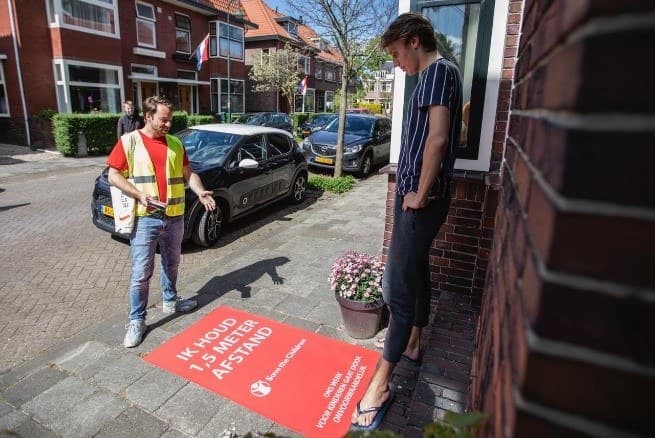
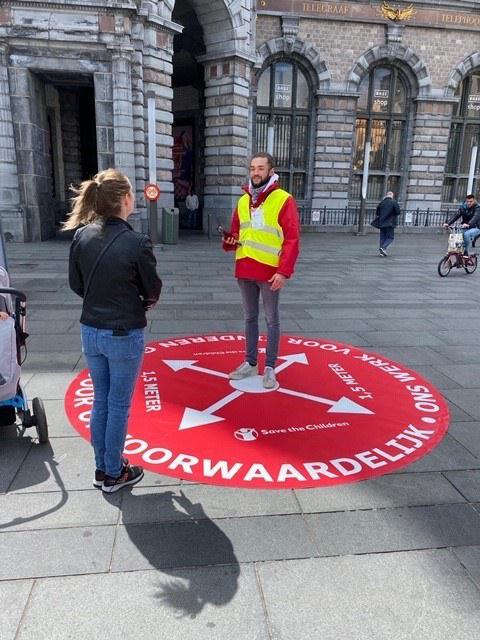
Face-to-face fundraisers have learned new skills, brought new energy to other parts of their organisation, in many non-profits they have worked on the frontline delivering front line services to beneficiaries, all of which makes them better, engaged fundraisers and raises their value in their internal culture among often cynical programme/service staff.
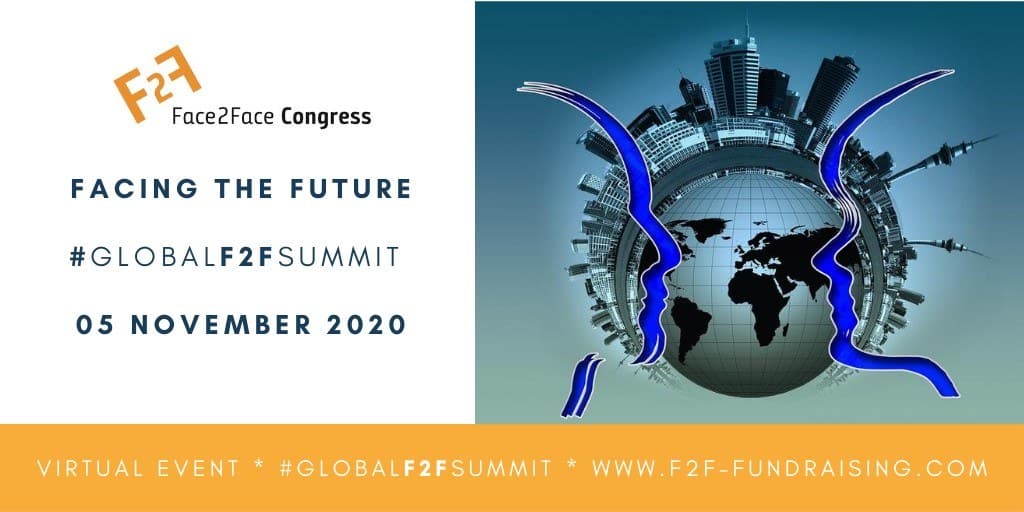
In the end our in-person 1st International Face2Face Fundraising Congress had to become another virtual summit, so at the start of November 2020 we could proudly call it ‘Facing the Future’, as this truly describes how the global face-to-face fundraising community has not only survived but has also proved its resilience in the face of COVID-19 and has evolved and thrived. In this congress we showed the voices and faces of F2F fundraisers around the world, joyously celebrating the work they all do to make the world a better place. It truly brought tears of happiness to this seasoned fundraiser’s eyes.
There is a great future for face-to-face fundraising… after all it is still only 25 years young and still able to pirouette during a crisis!
Daryl Upsall FCIOF
Madrid, 25 March 2020
* INPOs are International Nonprofit Organisations, a term which includes statutory and government bodies such as UN agencies, who are outside the term INGOs (International Non-governmental Organisations).
Coming soon on SOFII: in a follow-up article new SOFII trustee Rachael Moore explains how F2F Hubs are encouraging supportive collaboration by fundraisers to keep F2F thriving through the coronavirus pandemic. Watch this space!
















